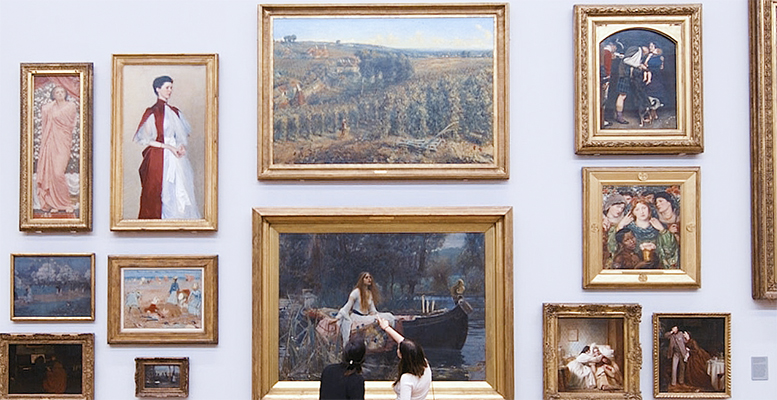S.Gyorgy, D.Picarda, F. Xydas and S. Wieting (Citi GPS) | Throughout the ages, great artists have tended to push the boundaries, challenging themselves, their audiences, and the conventions of their medium. The art industry, by contrast, has historically evolved at a glacial pace, and it has been especially slow to adopt digital technology and make deep structural reforms. But 2020 has marked a year of big change.
In particular, the COVID-19 crisis has acted as a catalyst for digital transformation. When the pandemic hit last spring, galleries around the world were forced to close their doors; international art fairs were postponed, while major auctions were delayed. The art market’s response to these unprecedented restrictions was to embrace technology and the virtual world at long last.
Galleries increased their digital initiatives, and saw their online sales grow from 10% of total sales in 2019 to 37% in the first half of 2020. Industry players also introduced a number of innovations to navigate the crisis. International art fairs launched virtual events offering viewers more comprehensive background information on featured works, and importantly, more transparent pricing. Small arts businesses seized new opportunities by leveraging digital platforms to access a global audience. The leading auction houses, such as Sotheby’s and Christie’s, switched to online-only formats and for the first time livestreamed hybrid online/in-person auctions.
The digital push by auction houses has been promising. Sotheby’s online-only sales grew year-on-year by 413% in the first eight months of 2020, with less pronounced growth seen by Christie’s (+120%) and Phillips (+52%). Sotheby’s debut livestreamed auction generated $363.2 million, followed by Christie’s event that achieved $420 million. “That buyers have shown a willingness to bid millions or tens of millions of dollars online is a significant development,” says Suzanne Gyorgy, Global Head of Art Advisory & Finance at Citi Private Bank. “Even when in-person auctions return in full, we feel that online sales are here to stay and will continue to play a growing role in the art market.”
Art also performed strongly in investment portfolios. In the first seven months of 2020, the Masterworks.io price-weighted All Art Index — which tracks the art market as a whole — was up 5.5%, outperforming ten major asset classes. Contemporary Art performed especially strongly, gaining 6.7% over the period. A rapid recovery in equities has helped maintain buying confidence. This resilience may continue as low interest rates make interest-yielding investments less appetizing; there is growing recognition of art as a means to diversify portfolio; and digitization broadens art’s appeal.
This digital awakening could not have come any sooner as more Millennials buy art. Sotheby’s reported younger buyers (under 40) now account for 25% of bidders in online-only auctions compared to 15% in live auctions, up 122% from 2019. Adapting to the digital and mobile preferences of this demographic will mean reconsidering each phase in the customer journey from discovery to the final purchasing decision. It also requires a shift in operating models from relying on in-person contact to developing trust online. Transparent pricing is but one step in this direction.
Deep change is also underway at cultural institutions like museums who have faced growing calls from the public to address issues of racial, social, and economic justice’. These reached a fever high pitch in the aftermath of the George Floyd killing, prompting many institutions to conduct wide reviews of their programming and staffing, and enact long-awaited reforms “As allies of artists, curators, and arts organizations, we must take steps to embody the values of a racially ust society,” says Marianne Lamonaca, Independent Curator, and President, Board of Trustees at the Association of Art Museum Curators. “To do this we must consider the entire cultural ecosystem that supports bringing art into our lives”
Altogether, 2020 has brought on many changes that are reverberating through the art industry in different ways. We expect some of these to continue into 2021 and beyond as the market responds to shifting consumer behavior and increasingly sees the benefits of digital adoption. Recognizing the changes in the horizon, Ms. Gyorgy says, “The role of the art advisor has therefore gained an additional dimension in this virtual world.”





